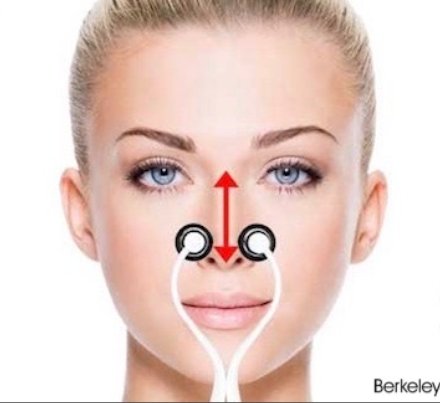Recovery from rhinoplasty is a year-long process with various stages. Nasal packing is put in place by your surgeon directly after rhinoplasty to support healing. In the past, nasal packing was a necessity to prevent any dangerous side effects of trauma to the nasal cavity and tissue post-operatively. Older procedures resulted in heavy bleeding and bruising which was relieved with nasal packing.
These days, increasingly advanced and refined surgical techniques make it so that many nose jobs do not always require nasal packing. Rhinoplasty procedures are safer and more accurate than ever before, and recovery recommendations are constantly changed and updated.
While nasal packing does have some benefits, it may not always be essential after rhinoplasty. Keep reading to learn when nasal packing is necessary and why it become less popular among surgeons and patients.
What Does Nasal Packing Do?
If you receive nasal packing, your surgeon puts it in place directly following your procedure. A cylindrical piece of gauze about the length of your little finger is packed high up into the nose with a string attached to facilitate removal.
Some swelling, bleeding, and bruising are normal after rhinoplasty. You may also have a stuffy nose, post-nasal drip, and headaches. Nasal packing’s primary purpose is to assist with the symptoms present directly after surgery.
Nasal packing has several benefits including (1) soaking up blood and other fluids draining from the nose, (2) applying direct pressure on the nasal tissue, (3) reducing irritation inside the nose, and (4) promoting blood clot formation, which adds pressure. All of these benefits reduce swelling and bleeding postoperatively.
Most patients feel as though they have a head cold when nasal packing is in place. They experience symptoms such as sinus pressure, headaches, and a congested-sounding voice. Inform your surgeon’s office right away if any of your postoperative symptoms – including pain, swelling, or bleeding – persists beyond the first couple of days or get worse.
Nasal Packing Timeline
If your surgeon chooses to use nasal packing, they will typically remove it a few days after surgery. Nasal packing is in place for about 2 to 4 days on average. Occasionally, patients are averse to nasal packing or complications may result in the gauze being removed sooner. Nasal casts are removed one week postoperatively.
Many patients want to know if it’s safe to remove their nasal packing. Due to the supportive role the gauze is playing, removing your nasal packing yourself is risky. It’s safer to allow your surgeon to remove nasal packing and splints to avoid complications and damage to your newly formed nasal tissue.
If you do decide to try removing it, soak it thoroughly with water and pull at the string slowly but surely. It may help to wiggle the string side to side to help the gauze slide out.
Support Healing After Rhinoplasty
Since nasal packing is in place during the first few days after your surgery, you need to be extra cautious to take care of your nose and the packing during this time.
You want to avoid getting the nasal packing wet so avoid showering until the nasal packing is removed. If you do need to wash, use lukewarm water and keep dressings, splints, and packing dry. Hot water – and hot foods and excessive sunlight – cause the tissues of the nose to swell which may disrupt healing.
If sleeping with the nasal packing is uncomfortable, apply an ice pack covered with a cloth to the area above the nose on the eyes, and forehead. This will ease swelling and may help you to fall asleep. Do not apply the ice directly to your nose.
You can also support healing after rhinoplasty by eating a healthy diet. When you provide the body with essential vitamins and nutrients, you speed up healing by helping the body rebuild damaged tissue. Fruits, vegetables, healthy proteins, and whole grains will assist in healing and give the immune system a much-needed boost to fight off any potential infections.
Is Nasal Packing Necessary?
In a lot of cases, nasal packing is no longer a necessity. New technology has refined rhinoplasty to maximize results while minimizing scarring, bleeding, and swelling during recovery.
The associated risks and complications associated with removal make it more troublesome than its worth for some patients. One study even found that nasal packing increases the severity of bruising around the eyes after rhinoplasty.
Most surgeons use a combination of splints and nasal packing to ensure proper healing. On their own, splints may be enough to maintain the structure of the nose. They are placed on the upper two-thirds of the nose and play a dual role in protecting the nose and keeping the newly sculpted nasal bones in place while they heal.
Another study showed that intranasal splints cause less pain without increasing complications postoperatively. A splint is two pieces of plastic that are held in place with a stitch and are easier to remove. Splints can be a viable alternative to nasal packing.
The outcome of your nose job will greatly depend on how well you follow your surgeon’s post-operative instructions. Feel free to discuss any concerns you have about nasal packing removal with your surgeon after surgery. If you would prefer not to receive nasal packing, you may also discuss this with your surgeon before your appointment.
Schedule Your Appointment Today
Dr. Becker specializes in rhinoplasty and revision rhinoplasty procedures in Central and Southern New Jersey. He is a board-certified plastic surgeon with over 20 years of experience and a drive to stay ahead of rhinoplasty innovations and trends. Call to schedule a consultation to learn more about your options for rhinoplasty and how nasal packing might play a role in your treatments.

